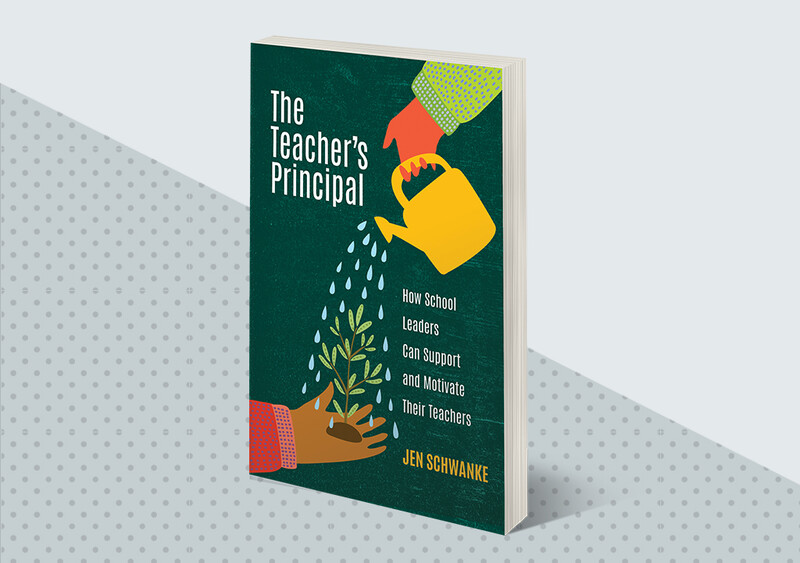Several years ago, I was presenting to a group of principals at a large conference. As is my typical practice, I wrapped up by asking if there were any questions from the attendees I’d not yet answered. A member of the audience raised her hand. “Respectfully…” she started. I braced myself. “I’ve been attending conferences for years,” she said, “and I never hear anything helpful about how to motivate and support my teachers. All teachers. Not only the struggling ones, but the ones who do excellent work, too. How can I be the principal my teachers need me to be?”
I wasn’t sure what to say.
“I know this is a complicated question,” she said. “But it’s what I need.”
There were many nods and murmurs of agreement.
The question was simple, but it did not have an easy answer. I thought about it as I walked back to my hotel. My phone buzzed with a text from my mother. She often sends me pictures of the farm where I was raised—a blooming daffodil, a dark storm cloud, a horse grazing in the pasture. This time, the photo was of the large maple tree—in its full autumn glory—on the north side of the farm. Just a sapling when I was a child, the tree has grown into a marvelously strong, beautiful thing, throwing enough shade for an entire family to have a meal shielded from sun. “Imagine how deep the roots must be!” her text read.
In the hotel room, I rummaged in my bag for a pen and a scrap of paper. Thinking about the question I’d been asked at the conference, I sketched a tree with deep roots. I stared at the drawing, and, just like that, I had an answer. I wrote purpose next to the tree’s roots. I wrote priorities next to the trunk, and patterns near the branches and leaves. Then I wrote motivators at the top.
Jen Schwanke's early sketch of the three Ps of teacher motivation.
A Framework for Motivation
The concept makes perfect sense to me. If principals think about what motivates their teachers and understand that there are both positive and negative motivators, they can proactively intervene when a teacher is struggling. They can also identify ways to enhance and highlight the work of teachers who are at the top of their game. Let’s look a little more carefully at each of these motivators.
- Purpose: A teacher’s purpose is their “why.” It is rooted in their core values and teaching philosophy. Purpose is more fixed than patterns or priorities, and remains relatively unchanged over the course of a career. For example, a teacher with positive purpose might bring empathy, skill, and expertise to students struggling with math, and find ongoing professional validation in helping them understand complicated mathematical concepts.
- Priorities: A teacher’s priorities reveal their current level of commitment—and obstacles that get in the way. Like the solid trunk of a tree, priorities must sway and flex because they are affected by the teacher’s life and commitments outside of school. As such, they either add or detract from a teacher’s daily decision-making. Priorities expand and recede at various points in a teacher’s career. This motivator guides a teacher’s patterns and is grounded in purpose. As an example, a teacher may be fully committed to their classroom and students, but unexpectedly face parenting responsibilities that cause challenges to their professional performance.
- Patterns: Patterns are a teacher’s visible habits and routines that drive daily decisions. These may change over time, in both positive and negative ways, and are easily influenced by a principal’s guidance and support. Being at the top of the motivation tree, patterns are supported by priorities and fed by purpose. Examples of patterns are depth of instructional planning, classroom setup and management, and the teacher’s process for providing student feedback.
All of these motivators manifest themselves in ways that are unique and personal to each individual teacher. When things are going well, it might be because their purpose is a strong pull to make a difference in the life of a child; their priorities are aligned to the work and balanced with the needs of their lives outside of school; and their patterns are student-focused routines related to classroom and curriculum. On the other hand, when a teacher is struggling, they may be pulling from a purpose that is not student-centered; their priorities may have shifted in ways out of their control; and their patterns may look like negative, lazy, or damaging habits. Getting to the real issue helps a principal know how and when to step in.
Just like a tree needs roots, a strong center, and leaves that reach higher with time, a teacher needs purpose, priorities, and patterns to thrive throughout the many years of their professional journey.
It’s worth noting that while teachers are often in control of their purpose, priorities, and patterns, there are some factors that are always a threat to their motivation. These might include:
- Being part of a minoritized group
- Exclusion by colleagues
- Struggling with mental health challenges
- Feeling the principal does not understand them or leads with no regard to the teacher’s experiences
Just like a tree needs roots, a strong center, and leaves that reach higher with time, a teacher needs purpose, priorities, and patterns to thrive throughout the many years of their professional journey.
Jen Schwanke
How Leaders Can Support Teachers
To be successful as a principal, we need our teachers to respect and trust us. They tend to appreciate when we lead from their perspective. Teachers today face challenges that were not part of the experiences many of us had when we—their principals and school leaders—were teaching in our own classrooms. Even in the past year, there have been issues that have never before been seen in education. For that reason, we need to transcend the memories of our own experiences—and then we need to trust, believe, and honor the work our teachers are doing. This doesn’t mean giving them full and free rein; on the contrary, it means holding them accountable through positive support and high expectations.
But how can we fit consideration of purpose, priorities, and patterns into days that are already chock-full? The answer lies in our mindset. This work is not an additional item to check off a list. Instead, we can incorporate it into each interaction we have—through ongoing discussions, informal classroom visits, regular check-ins, schoolwide efforts toward gratitude, and so on. It’s about leading a culture of both excellence and empathy. In fact, the work itself can be rooted in our own purpose, priorities, and patterns as a principal. It becomes a perfect cycle of professional collaboration and expertise—and, in answer to the question I faced at the conference, it will make us the principals our teachers need us to be.
The Teacher's Principal
In her new book, Jen Schwanke provides an invaluable roadmap for compassionately supporting teachers—those doing good work and those struggling to get back on track.









